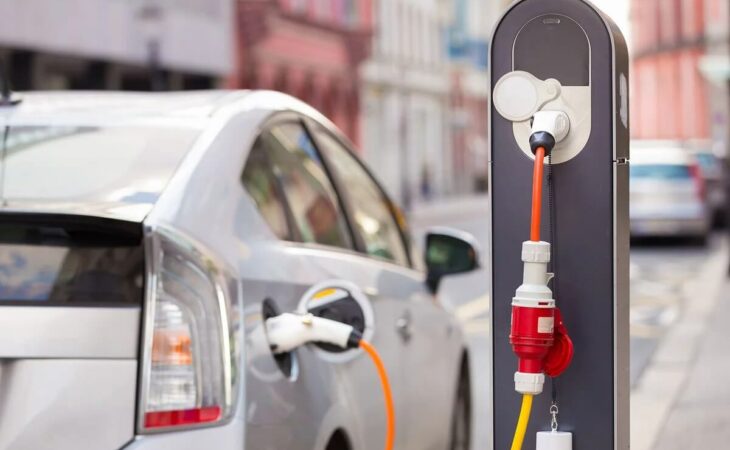Electric cars have become very popular within the automobile industry. They are consuming the plans, resources, and time of just about every automobiles manufacturer in the world — plus some tech companies like Google who want in on the fun. And why haven’t they found even greater success? Technology already exists. They help the environment. Some of the newest models can look very intricate, even striking. However, most consumers remain ambivalent towards electric vehicles.
According to data from the Alternative Fuel Data Center, only three percent of all vehicles sold in the U.S. in 2015 were electric cars. Even hybrids have yet to gain traction as predicted, and sales in recent times have been shaky. So why are people choosing to drive traditional, polluting vehicles when we could all be using electric cars? The answers may be unexpected.
Table of Contents
10. Charging Stations
Although electric vehicles (EVs) have seen major progress since their inception, most major cities in the U.S. (and elsewhere) lack the infrastructure to support them. Our point is that there isn’t enough electric vehicle charging stations around where people can charge their electric vehicles.
While gas stations can be found in nearly every populated area, charging stations are still very rare. While your electric vehicle (EV) can become stranded, if the battery is drained. It can be difficult to implement infrastructure necessary to support all the EVs that are on the roads today, and all the potential EVs of the future. After all, every person needs somewhere to recharge their electric car. Now, we come to the final problem.
9. Charging time
How long will it take to fill your car with gas? A few minutes?. Five or fewer? The time it takes to fully recharge an electric car battery is approximately 3 hours. For some consumers, it can take up to eight hours before fully recharging. Even if we install more charging stations, the amount of time it takes to recharge an electric car’s battery is still a major issue. So what would you do then? Is your car resting in the back seat while it’s being charged at the charging station?. “Yeah, that’s okay.” Tomorrow, I’ll get home from the grocery store. “No problem.”.
Tesla made great improvements to their battery, but charging it is still a major challenge. It’s the main reason why many consumers are reluctant to purchase electric vehicles. The key will be to develop a battery charging system that is fast. Tesla is also working on a plan to enable faster and energy dense batteries. Nevertheless, they are only found in a limited number of areas.

8. Green-ish
The common wisdom is that electric cars are “green” as good for the atmosphere. But just hang on to a second. Most of the electricity grids used to charge EVs are still powered by fossil fuels, such as coal. This means that the more electric car batteries are charged, the more fossil fuels are required to power the grid. This means that more coal is being put into power plants to produce the energy required for these so-called “green cars.”
In recent years, many environmental organizations and proponents have stepped away from completely endorsing electric vehicles. The lack of endorsement has not gone unnoticed by customers who can be affected by this form of environmental approval stamp. Trade in refined oil for coal-fired energy is not necessarily a perfect boost. However, to be clear: EVs are best for the environment. However, once energy comes from a sustainable, clean source, EVs would still have an effect on the use of fossil fuels.
7. Range
The range of electric cars is another major problem. By this, we mean how far an EV will go with a single battery charge. A lot of progress has been made in this field in recent years. Technology is only going to get better. However, most EVs can travel anywhere in the 100-to-150-mile neighborhood on a single battery charge. That would be all right for you to live downtown and not travel too far, very often.
You’re not going to take the family on a cross country summer road trip in an electric car any time soon, though. Add to the previously stated shortage of charging stations, as well as the unnecessarily long time it takes to recharge an electric car battery, and EVs don’t seem to be a very practical option. Unless you’re just commuting back and forth every day, and never out of town, an EV might not be the best option for you. Much of today’s customers are on the move.
6. Performance
A major criticism among car reviewers is that electric cars are just not a lot of fun to drive. The engine output is poor and there is virtually no pick-up (or oomph, if you will). You can’t get on the highway very easily, you can hit-and-miss handling, and the car’s battery is dead before you know it. For these reasons, many professionals in the automotive industry are complaining that EVs suffer from a lack of efficiency.
You really can’t do a lot of things with an electric vehicle that you can do with a conventional gasoline car. Let’s face it, most of the cars are sold (to a large extent) on the basis of their results. Watch the car commercial and you’ll see the pick-up trucks ascending the mountains, the sports cars turning sharp, and the SUVs taking the extended family across the wooded valley and splashing through the rivers. The Nissan Leaf doesn’t do any of these things.
Ultra expensive models such as the Tesla Model S and the new Porsche Taycan are finally aiming to provide EV drivers with the adrenaline rush. Unfortunately, their starting rates are in the low six-figure range and only get more expensive from there. For the average driver, the EVs are stuck with the “boring” tag.
5. Battery replacement
And if you save money on petrol by driving an electric vehicle, you would eventually need to replace the battery in it. They’re not cheap. Currently, EV batteries cost anywhere from $500 to more than $1,000 to repair. It’s a lot more than the batteries used in traditional vehicles. Although some governments have tax benefits and voucher schemes available to help offset the costs of initially buying an EV or replacing the battery, these programs at best provide token returns. They are not generous enough to significantly compensate for the cost of replacing the battery.
Some EV batteries that are marketed to last two to three years have been found to last just one year depending on how much the electric car is used. This means that customers will spend a lot of money on new batteries faster, and more frequently than expected. Battery technology continues to advance rapidly, but not quickly enough for customers to get on the EV bandwagon.
4. Extra Costs
Replacing the car battery is not the only major extra expense that comes with owning an electric car. Your home garage (or driveway) must also be equipped as a de facto charging station. This means purchasing and installing all the requisite charging equipment, which can cost as much as $2,500 or more. Plus, you need to keep this equipment going and running as planned. That means daily maintenance and technicians, both of which also cost money.
In the end, many consumer advocates are curious how much money someone who decides to purchase an EV will really save. What you would save by removing increases in gas and oil is likely to be spent on battery replacements or charging stations. Most EVs are complicated parts of the technology, which means that any fix required could hit your wallet hard. Throw in that most EVs also cost more than a comparable gas-powered vehicle, and you pay just as much—if not more—to ease your conscience by driving Eco.
3. Style
Tesla is doing her utmost to make electric cars more fashionable. Model 3 is a big leap forward for EVs. The truth, however, is that many electric cars on the market today look more like the Nissan Leaf and Renault Twizy. Unfortunately, they’re neither trendy nor nice. This makes marketing EVs challenging for image-conscious consumers – particularly when it comes to younger drivers that marketers and advertisers want.
Most industry experts believe that if electric cars are to really take off and become the main stream, they would need to become, well… more desirable. Adding some sex appeal to EVs could benefit these vehicles. Brands like Porsche, Jaguar, and Mercedes are finally going to create EVs that look worthy of your hard-earned dollars. After all, a lot of people identify with the car they’re driving. What does the Renault Twizy mean about you?
2. Gas Prices
Consumers just don’t buy EVs on their own in significant numbers. They’re going to need a boost to get there. Growing emphasis on climate change will help, but most experts believe that the drive will come as soon as gas prices become too high for a prolonged period of time. Unfortunately, that hasn’t happened yet.
Although gas prices have risen (and often rise and fall), they have not yet reached a point where customers find them unsustainable and willing to make a shift. It remains to be seen how long gas prices would take to hit a tipping point for motorists. The consensus opinion is that the cost of owning a conventional gas-fueled car would have to be much higher than the cost of owning and running an EV for customers to turn to sizeable numbers.
1. Sticker price
The bottom line is that the cost of purchasing an electric vehicle is far too great. With its Model S, Tesla changed completely the EV industry, but that model cost $80,000! absolutely true, Tesla Model 3 is going to be cheaper, but it’s still starting at around $35,000. Add in the extra costs to own and maintain an electric car charged, and you can see how many people find electric cars unaffordable. Especially when they can get the equivalent size of a conventional vehicle for less than $20,000 – and that’s brand new.
The price point of EVs is the single biggest factor that holds these vehicles back and prevents them from gaining widespread acceptance. If the price is changed and they become more affordable, buyers are unlikely to purchase these vehicles in droves. Of course, we all like the concept of being environmentally conscious. But at what price, huh? New technology is often super costly at first, but the EV revolution will not really begin until prices fall.










